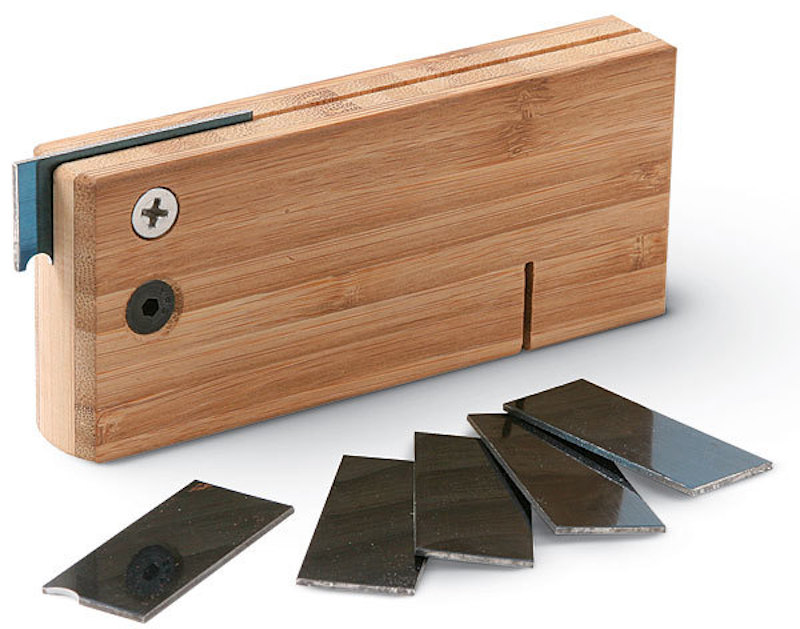The Windsor Beader
I came across this tool at a vintage tool market during a recent trip to Pennsylvania. Being a sucker for anything resembling a spokeshave, I snapped it up. Beading tools have been made by many manfucturers, the most well known being the Stanley 66, but the Windsor beader, aimed at Windsor chair makers stands out as unusual.
Hank Allen has written a rather wonderful history of this tool in “The Tool Shed” , so I wont dive into that here. In the photos below I’ll show my efforts at using and fettling my tool.

First off let’s take a look at the tool. Unlike the Stanley 66 and other similar tools, rather than a set of cutters, it has a single cutter with many profiles around its circumference. To pick a profile slacken the nut at the front and rotate the cutter to the profile of your choice.

The fence is also unusual. Its not adjustable, rather when the front nut is loosened, the entire cutter assembly can be slid from side to side.

Here is a Stanley 66 for comparison

This specific tool still has a lot of the label attached.

The first problem to fix with my tool is that the fence is no longer square. Loosen the screw, line it up with my square and tighten and its all better.


Time to try it on some wood. I grabbed a scrap of walnut and had at it. I quickly found that the nut that holds the cutter assembly in place is not to be trusted. If you apply heavy pressure, it loosens and shifts. You have to start the tool with light cuts. Once you have some depth, the tips of the beading profile help keep everything aligned. I had to stop every 10 or 20 strokes and check the nut was still tight. Most of the time it had developed some slack. You learn to deal with it, and once a little depth has been acquired its not that important.

Here we are about 100 strokes in on the right. On the left you can see where I trusted the fence to much after it shifted and gouged the work. So its working, but its very slow.

After about 200 strokes, we have a bead, and I trusted the fence to much again and put a nice gouge in it. Not great, but my first time trying the tool. Lets see if sharpening it will help a little.

I dissassembled the tool to get the cutter out.

The edge is not in terrible shape, but its not exactly clean either.

After a few minutes work with a round file. You want a real round file, not tapered or the edge will be lower/wider on one side than the other. I’ve heard chainsaw files are perfect for this. I could’nt find mine. I did come across a very round needle file and used that. This is not perfectly filed, but good enough for a few minutes work. The edge is not in terrible shape, but its not exactly clean either.

The round file

I then polished it with a tiny oilstone rod. I had a slipstone (in the background), but the radius on the small end was too large for this.

Then its a quick polish on a fine diamond stone to take off any burrs from filing and stoning. I use a little bit of scrap to get pressure on just the profile so I dont have to polish the entire side.

The polished edge.

A little over 100 strokes and I have a bead. So I’ve roughly halved the work required. I have one more trick up my sleeve, and I have no idea if its going to work….

I took my Accu-Burr to the edge and used the fine groove to see if that would improve the cutting action.

42 strokes…. That a pretty big improvement and the surface quality is much better. To be clear, I put some of this down to me learning to control the tool. That is exactly my 4th time using it. But it does seem to work well on it, will require further experimentation and replication to be sure. The Accu-Burr is a little large for a profile this size. It was very tricky to apply pressure and stay horizontal and inside the profile.

Lastly, if you dont have a Windsor beader, or a Stanley 66. You can look at making yourself a scratch stock. The materials are cheap, and the design easy. Hock sell a kit for making one, and even if you dont use their parts, their instructions are excellent. If you want to bead a curved surface, or a concave surface, a custom made scratch stock can be the superior tool.